More Spanish Sandwiches Featuring Bocadillo de Calamares
We covered Bocadillos last month, a type of Spanish sandwich using a baguette or bread roll and just a few simple ingredients. There are many different kinds of bocadillos, and among them was one of our subjects for this month, the Bocadillo de Calamares. In discussing last month’s article with friends who’ve spent time in Spain, it was clear there were some favorite Spanish sandwiches I had neglected to mention. I also found a few I wanted to try but hadn’t gotten around to last month. So in addition to our nominal subject, we’ll cover these as well.
Bocadillo de Calamares
Bocadillo de Calamares is a fried squid sandwich popular in Madrid especially, but known all over Spain. The squid is simply prepared and simply dressed, with only allioli and perhaps a squeeze of lemon juice added. In the Zaragoza area, it is sometimes dressed with a spicy tomato sauce like the tapas dish patatas bravas, in which case the sandwich is called Bocadillo de calamares bravas.
There’s really not much to it. Whole squid, fresh or pre-frozen (which is all I can get around here) are cleaned, the heads, beaks, wings, and other cartilaginous parts removed. The bodies are cut into rings and the tentacle section left intact, minus two long thin tentacles that are removed as well. These pieces are dredged in flour seasoned simply with salt, white pepper, and a little dried parsley. Then they are deep fried in oil for a very brief time, 90 seconds perhaps. Any longer and the squid meat gets tough and rubbery.
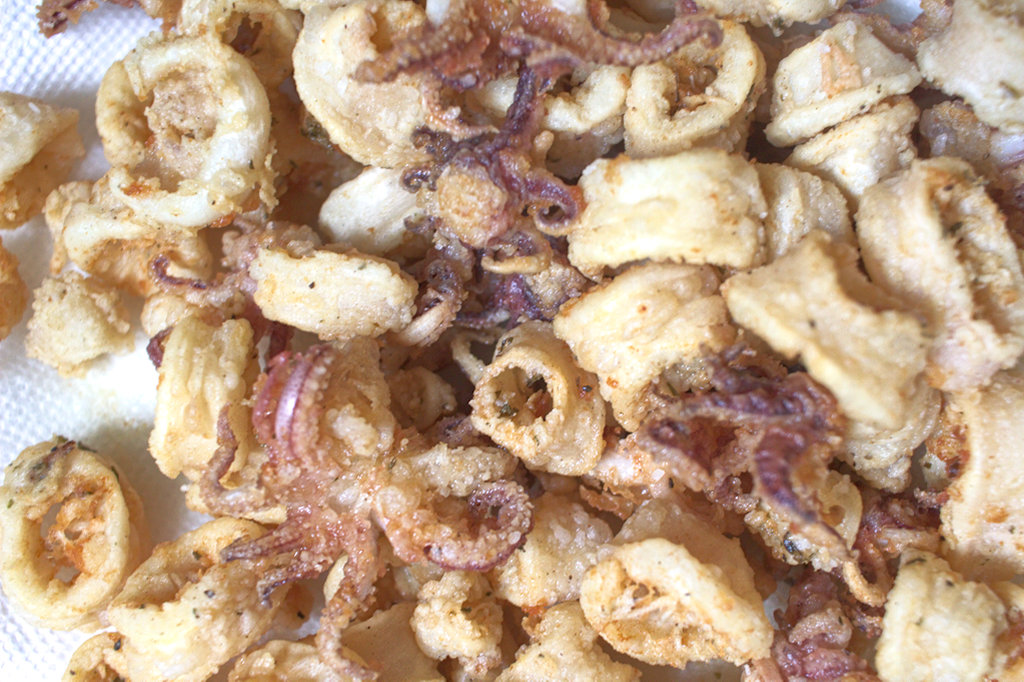
They don’t pick up much color in such a brief cooking time–the tentacle sections have a little purple on them that causes the thin breading to appear darker than it is. Preparing a sandwich is easy. You start with a section of baguette, spread with a little allioli. I brushed these with olive oil and gave them a quick toast under the broiler. I also added some pickled guindilla peppers per the advice of a few of the recipes I’d reviewed.
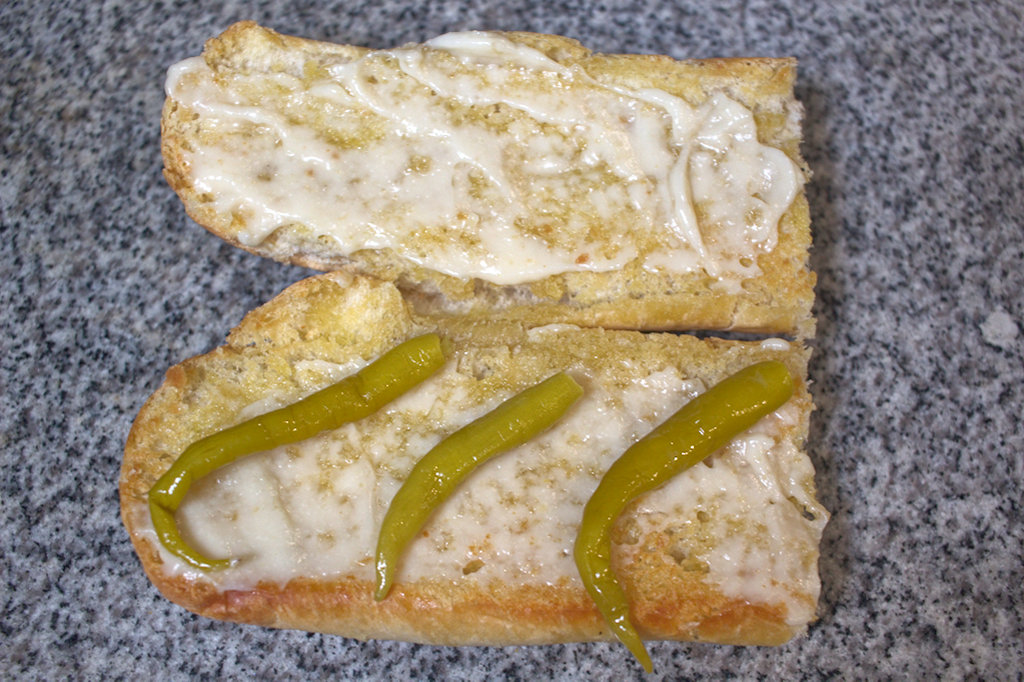
Then I added a good handful of fried squid.
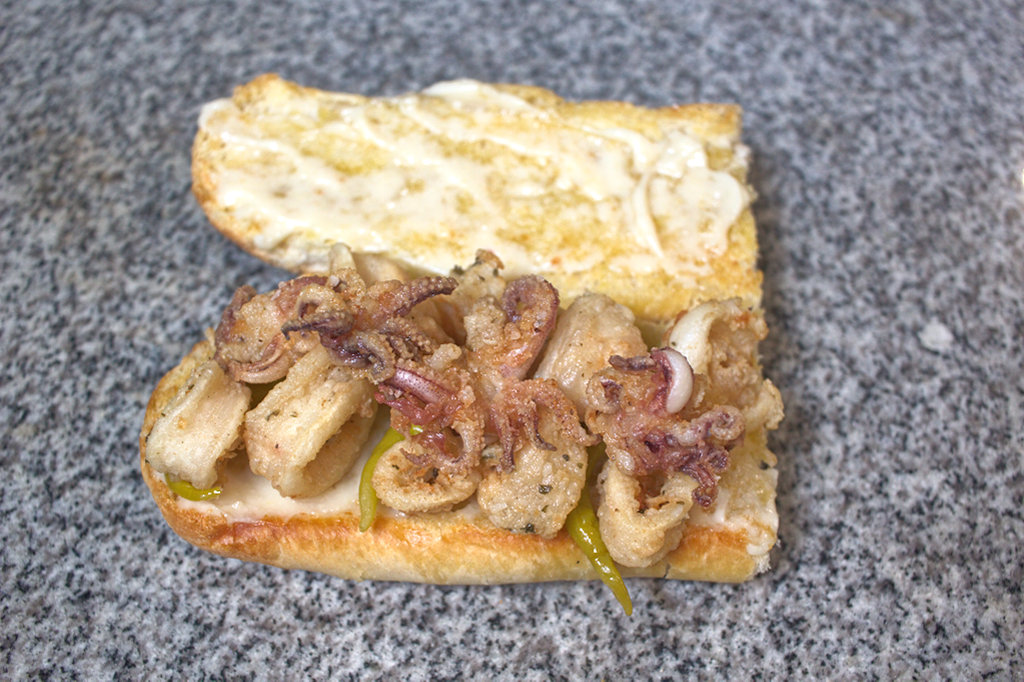
That’s it. The sandwich is done. We had some lemon wedges on hand for people to use as needed, and I made several more sandwiches for my family, some with and some without the guindilla peppers.
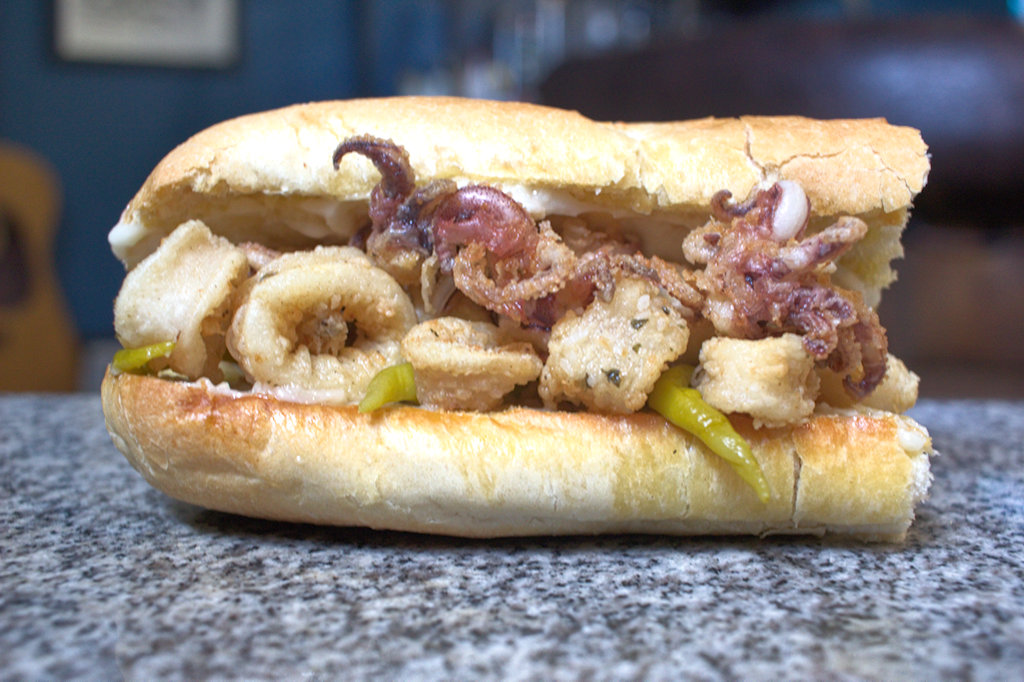
These sandwiches were great. I do recommend going light on the salt in the breading flour–between that and the allioli, these sandwiches can get quite salty. Even cooked for a very short time, the squid is firm and somewhat chewy. Between that chewiness, the crispness of the bread crust and the squid breading, and the softness of the bread crumb, the sandwich presents a variety of textures that belie the simplicity of its ingredients.
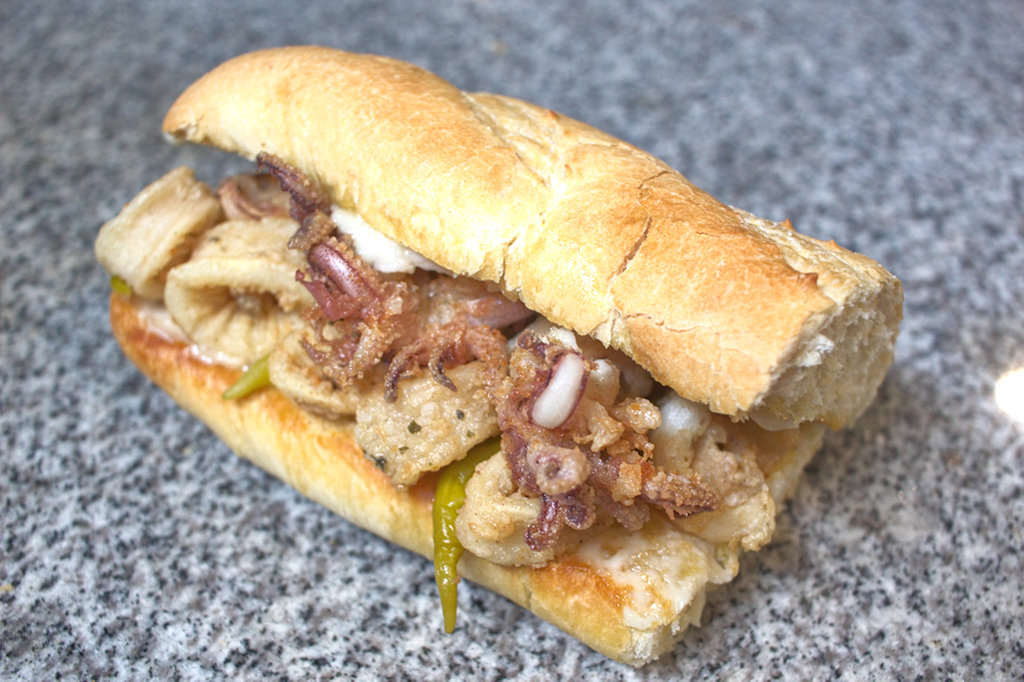
Perhaps next time I will try making some salsa brava–I think the umami boost from a spicy tomato sauce would make an interesting addition. I’m happy with the sandwiches we had though.
Montadito de Pringa
My… cousin-in-law? Let’s just say my friend Daniel mentioned the montadito de pringa in a response to last month’s bocadillos post. Daniel and my wife’s cousin Katy both took leaves of absence from work last year to spend some time traveling the world. Their wanderings–documented both by Daniel and Katy–have been curtailed by the COVID-19 pandemic for now, but before returning to the US and self-isolating they spent some time in Seville, in the southern Andalusia region of Spain, where they had sampled this regional tapas.
Pringa, essentially, means leftovers–pringa is a shredded mixture of meats served as part of a cocido, a kind of build-your-own Spanish stew where various meats, root vegetables, cabbages and chickpeas are all simmered together in stock, then separated and served individually along with bowls of the stock, perhaps with some small thin fideo noodles.
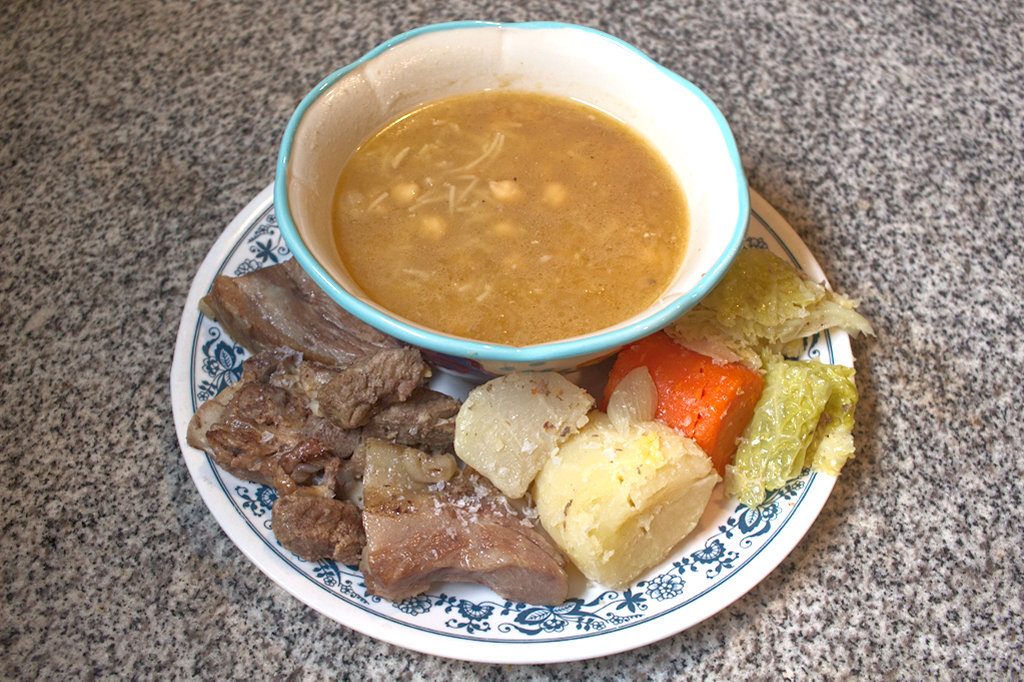
For my cocido, I used pork shoulder, beef chuck, salt pork, chicken thighs, and leftover chorizo and morcilla from last month. My veggies included carrots, onions, potatoes, turnips, and cabbage. It’s a hearty meal, not really a 90° day in June meal, but very satisfying. Before serving, I made sure to set aside some of the meats and a little of the broth to make the Pringa.
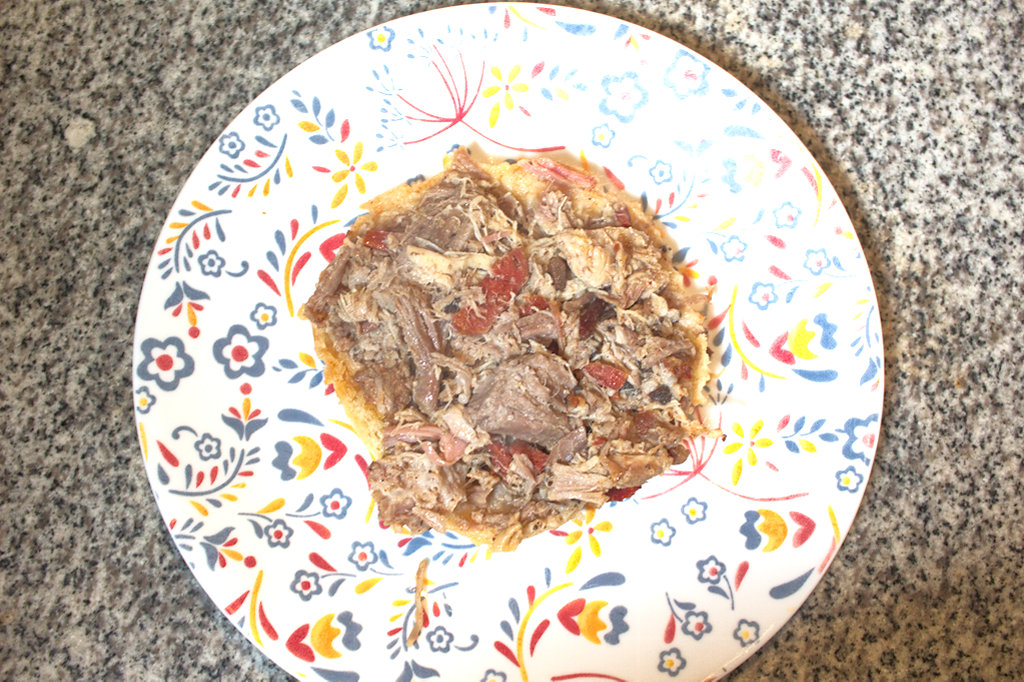
Pringa as served in Seville is a legacy of religious intolerance, albeit a tasty one. The cocido from which the Pringa is made was a smokescreen. The stew itself, or parts of it, may derive from the Jewish cholent, or adafina in Spain, the slow-cooked sabbath meal that is started on Friday evenings and eaten as a midday meal on Saturday, when no fires can be lit or work done. It also resembles Spanish Muslim recipes from the 13th century called sinhājī. In both cases, however, the prominent use of pork allowed these Jewish and Muslim families to present as converts to their neighbors and to religious authorities, while still practicing other aspects of their religions more covertly.
While Daniel’s montadito de pringa was served on a denser, biscuit-like bread, I used a simple Kaiser roll. I added a few spoonsful of the shredded pringa, along with some of its juices, and griddled the roll both top and bottom before serving.
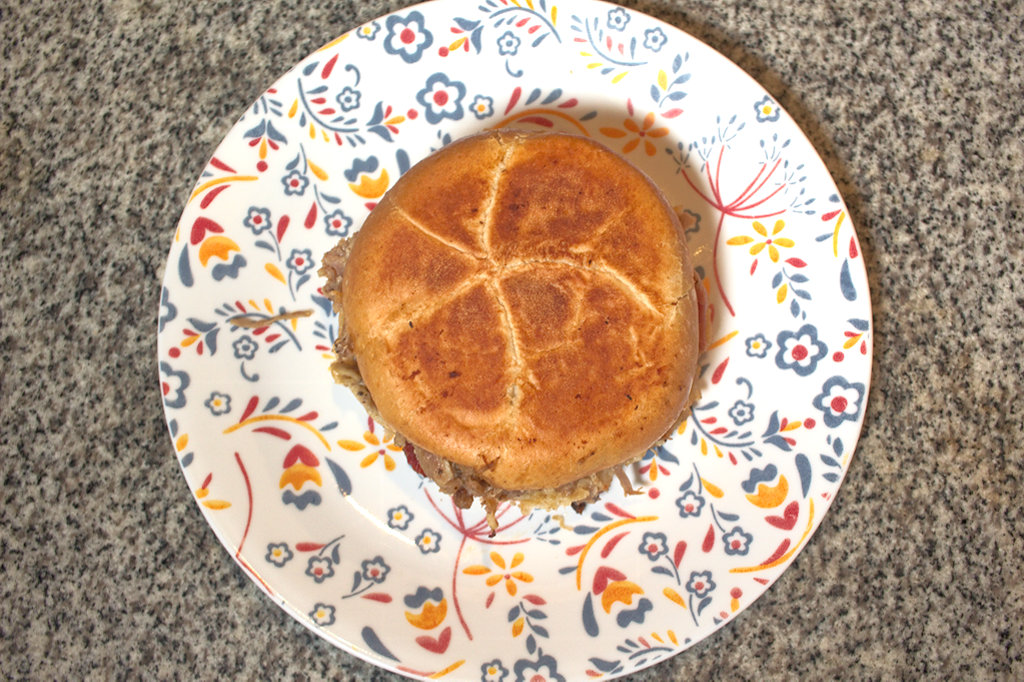
I might have been better served by the biscuit. The pringa mixture retained quite a lot of the fat and flavorful stock from the cocido, and the sodden bottom of the Kaiser roll almost could not support the filling.
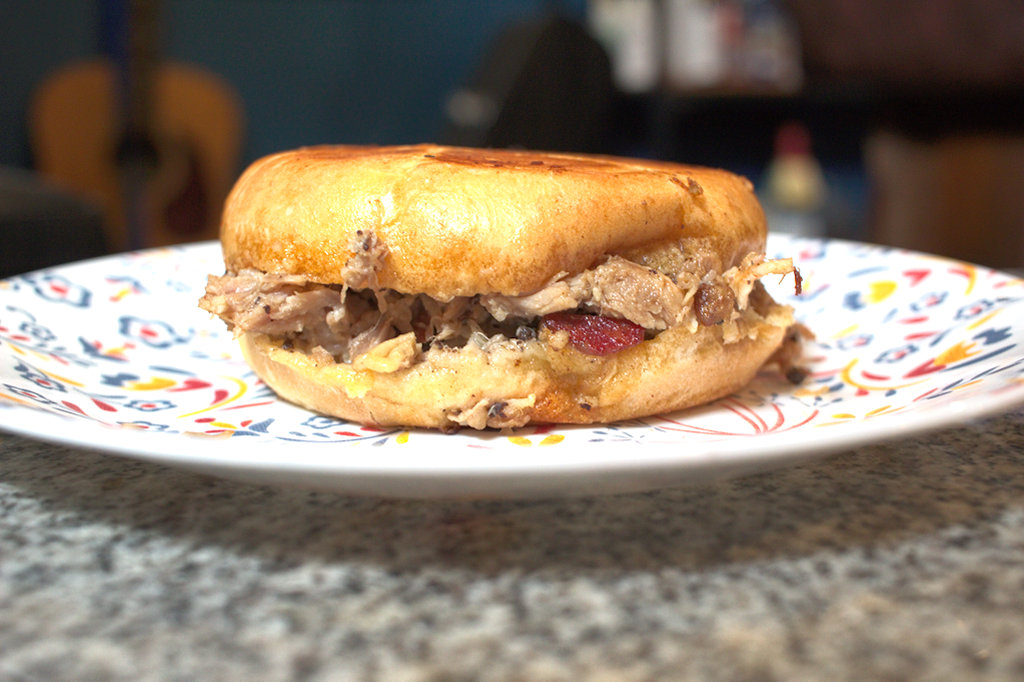
According to Taste Atlas, pringa is often served with salmorejo, a tomato soup served cold like gazpacho, but blended smooth with olive oil and stale baguette and just a touch of vinegar into a creamy emulsion with a nice hit of garlic, and topped with chopped hard-boiled eggs and jamon de Serrano.
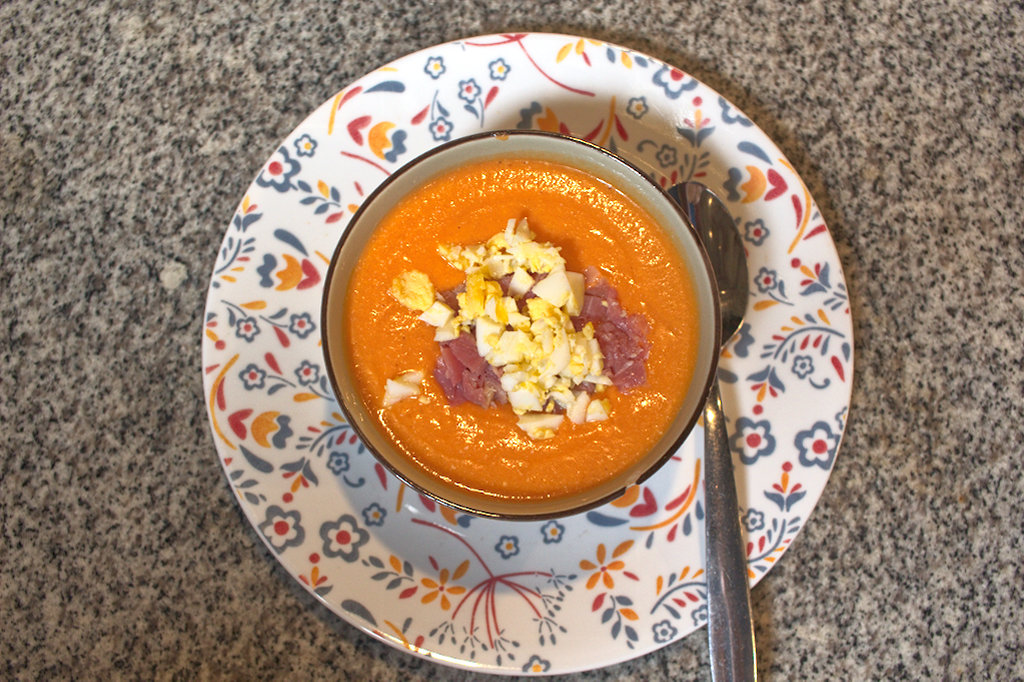
According to other sources, the sandwich can be served more simply, with a side of chips.
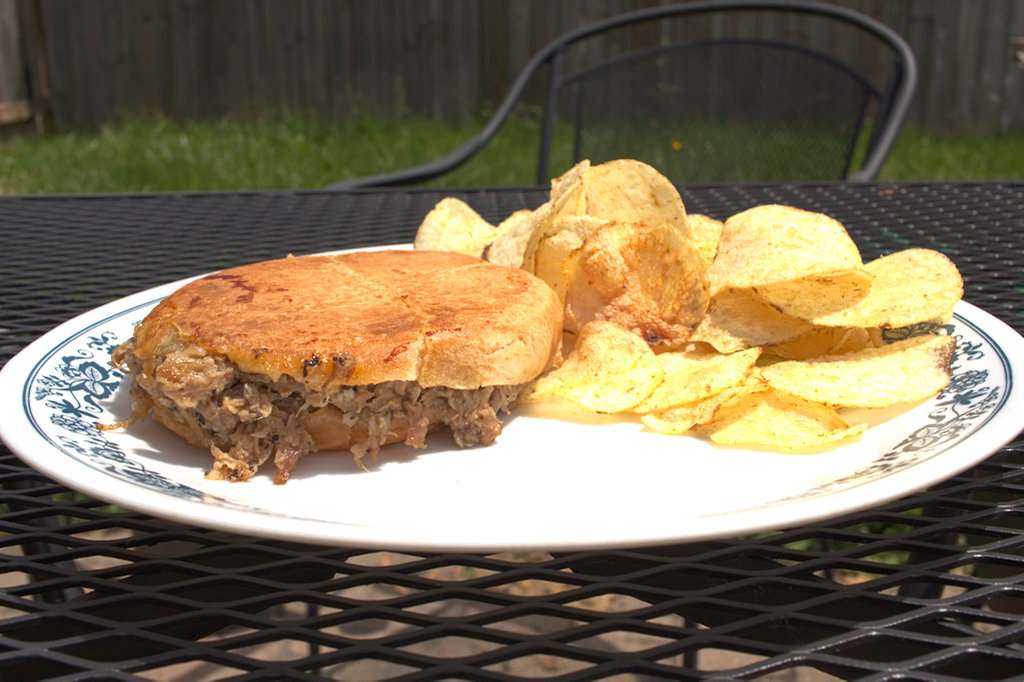
Sobresada
In another Facebook comment, my old friend Christina, who had spent some time as an exchange student in Spain long long ago when we were young, first gave me some tips to improve my tortilla espanola, but also brought up Sobrassada, a spreadable Spanish sausage similar to Italian ‘nduja or German Mettwurst.
Sobrassada is made from a combination of lean and fatty pork cuts, cured, spiced heavily with paprika, and aged for a length of time dependent on the casing in which it is stuffed. The sausage was traditionally made annually during the autumn, with the thinner sausages aging more quickly and consumed during the winter, and the thickest sausages hanging uneaten until the following spring or summer. It is sometimes used as a flavoring in soups or stews, but is popularly spread onto toasted bread and eaten plain, with cheese, or drizzled with olive oil or honey.
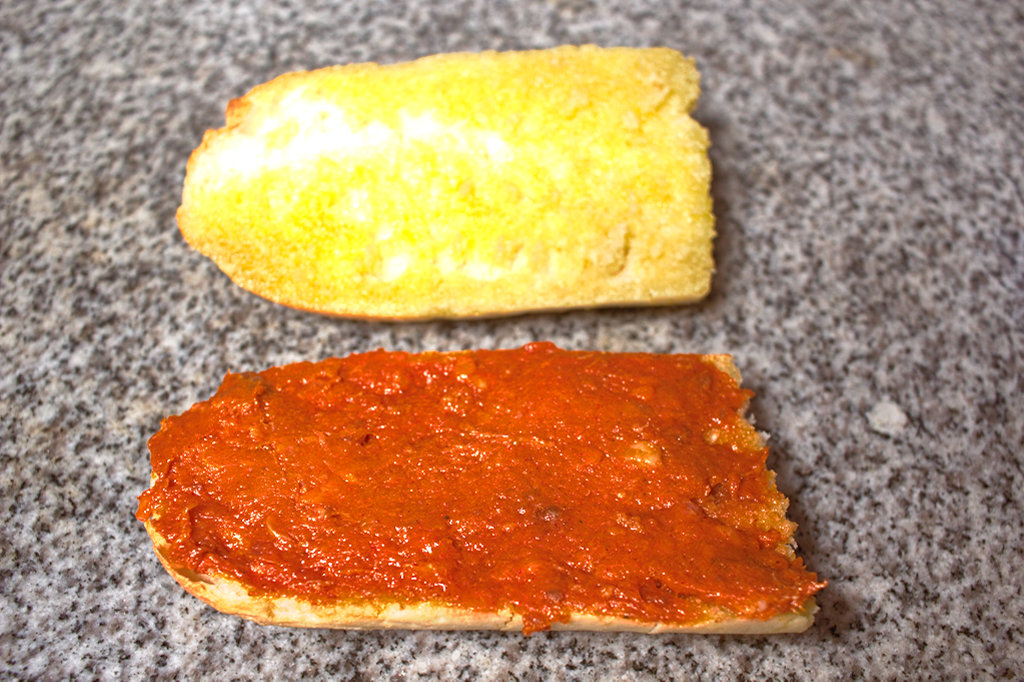
The sausage is soft and fatty and brightly colored. Even the residual warmth of recently-toasted bread starts to render the fat, causing the sausage to leak orange-red tears that drip down the sandwich’s sides.
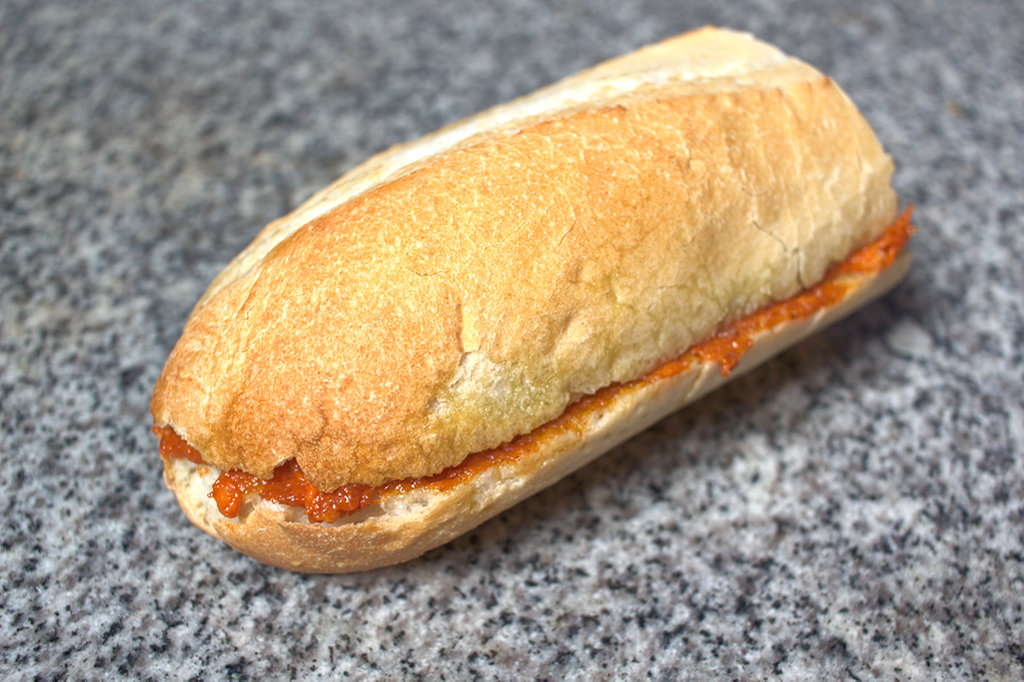
In researching more ways to use this sausage, I found a recipe calling for smoked San Simon cheese and sobrassada in a bocadillo. San Simon is a semi-firm cow’s milk cheese pressed into a unique teardrop shape. It has a mild, buttery and slightly acidic flavor that is given outdoorsy character by birchwood smoke.
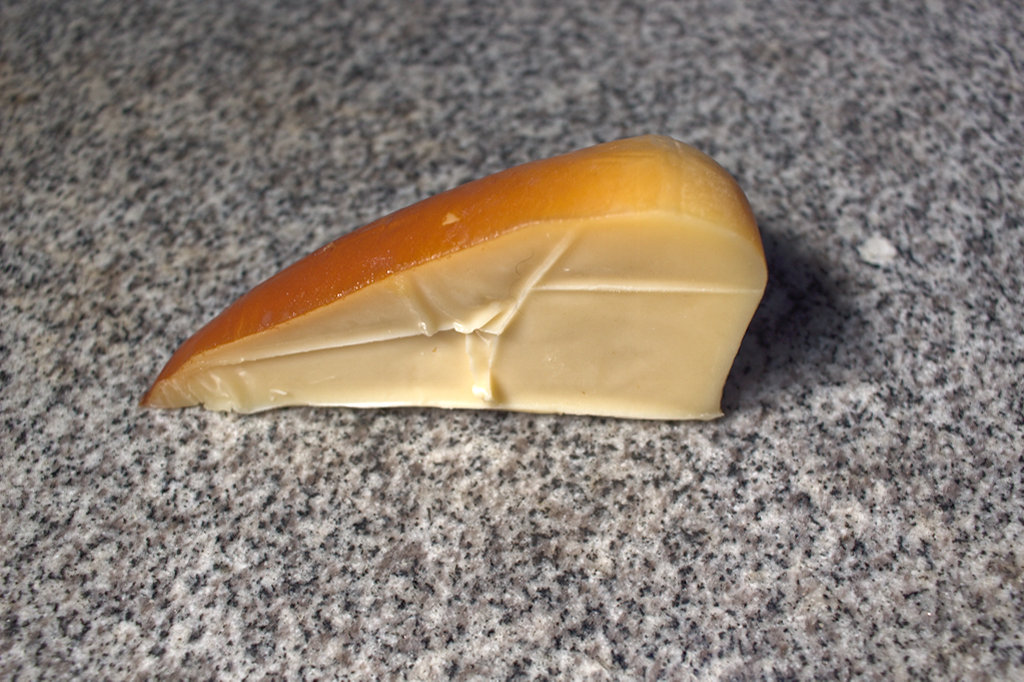
The recipe calls for brioche but I simply toasted a section of baguette, then melted a few slices of cheese onto the top half while spreading more sobrassada onto the bottom half.
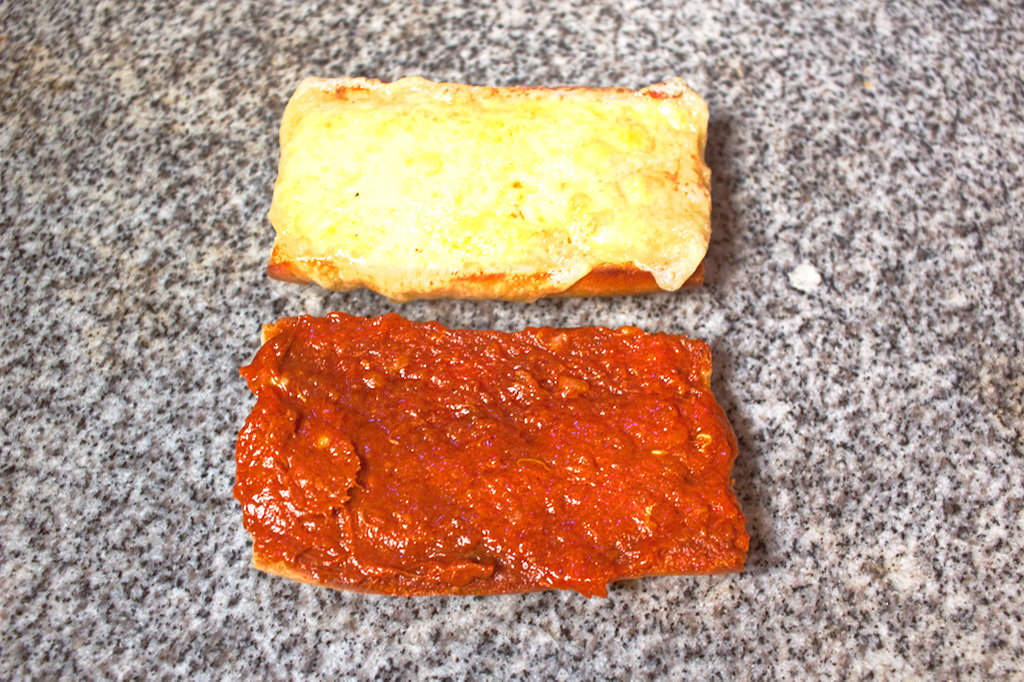
The smokiness of the San Simon cheese enhances the paprika flavor already quite present in the sobrassada, while the sausage’s saltiness gives the cheese potency it does not possess on its own. It’s a strong combination, but I might prefer the sausage simply drizzled with honey.
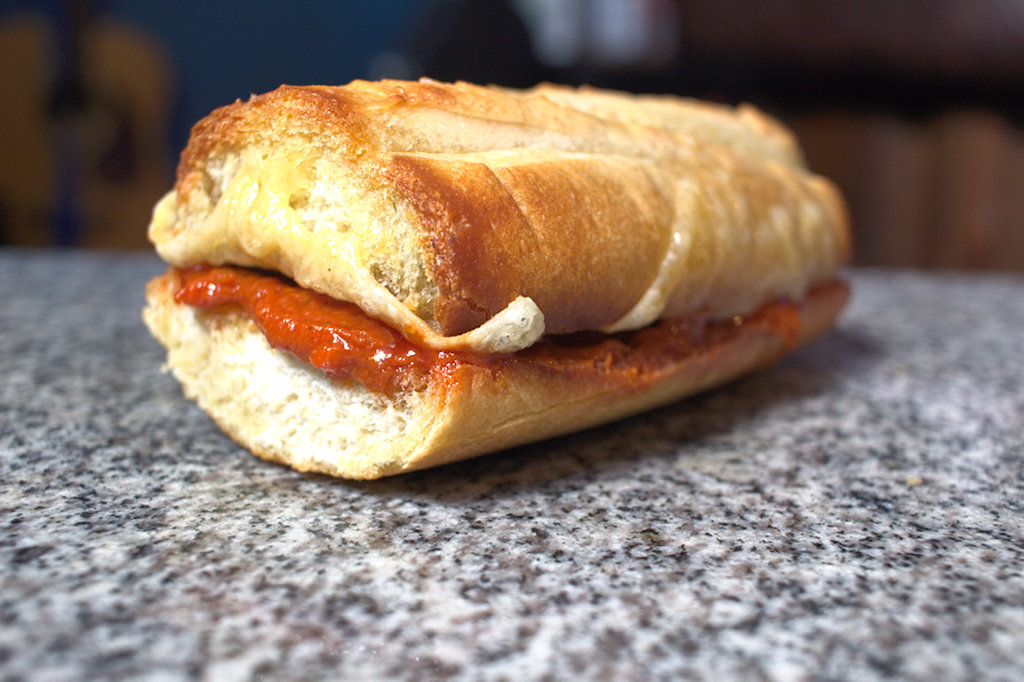
Lomo al Cabrales
The success with sobrassada and San Simon cheese got me looking for more ways to use Spanish cheeses in bocadillos. What I found was… potent.
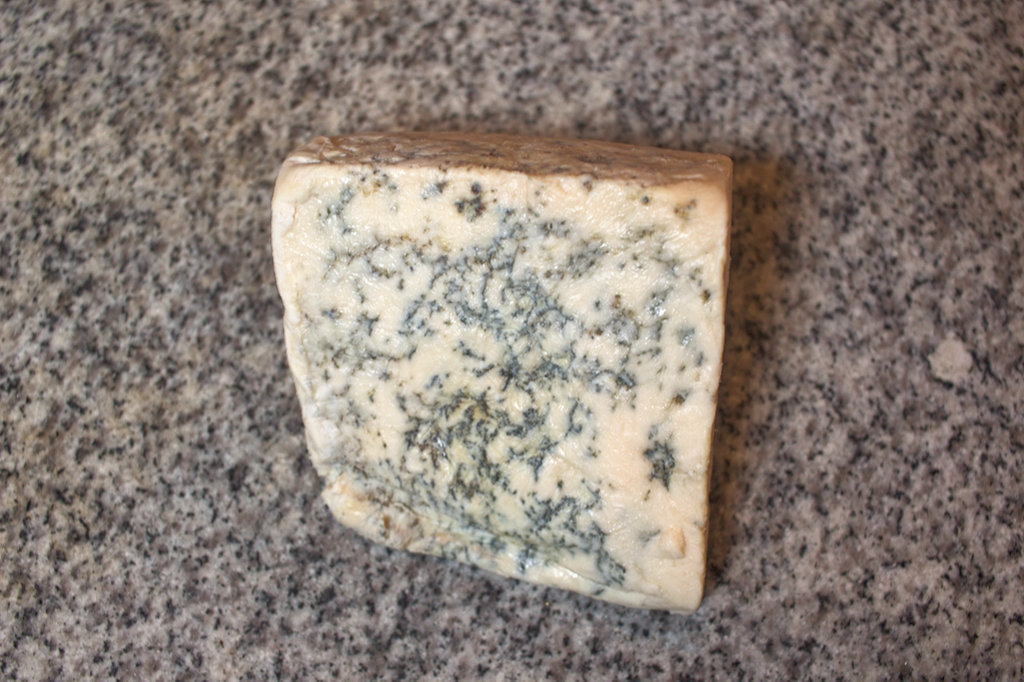
This is Spanish Cabrales cheese, one of the more aggressively flavored blue cheeses in the world. The cheese is only made in the mountainous area of Asturias in northern Spain. While many commercial versions are now produced using only cow’s milk, the traditional Cabrales cheese, like this one, is made from a combination of cow, goat, and sheep milks, aged in caves for up to 5 months to develop its distinctive mold veins. The resulting cheese is powerful.
Upon opening the package of Cabrales, its aroma fills a room. I am not allowed to keep it in the house as a result. It is salty and a little sour, smooth-textured but with crunchy bits of crystal throughout and that sort of burning sensation that tells you you are eating mold. Some bites–many bites–contain more mold than cheese. It’s quite a challenge. When I have the cheese with me, my dog will not leave my side, nose questing in the air, head cocking this way and that. I’m not sure if he wants to eat the cheese or roll around in it.
What to do with such a potent ingredient? In Spain, one of the more popular uses is to make it into a cream sauce and serve it with pork loin. Some have even translated this recipe into sandwich form.
So I pounded some thin slices of pork loin even thinner, seasoning them with salt and pepper. I gently cooked them in a thin layer of olive oil. I melted some cabrales cheese in a bain marie, combining it with some cream cheese (I actually used the last of my labneh from last month) and a little milk to make a sauce. I brushed a baguette with olive oil and lightly toasted it under the broiler and cut 2 of the thin-sliced pork loins to fit.
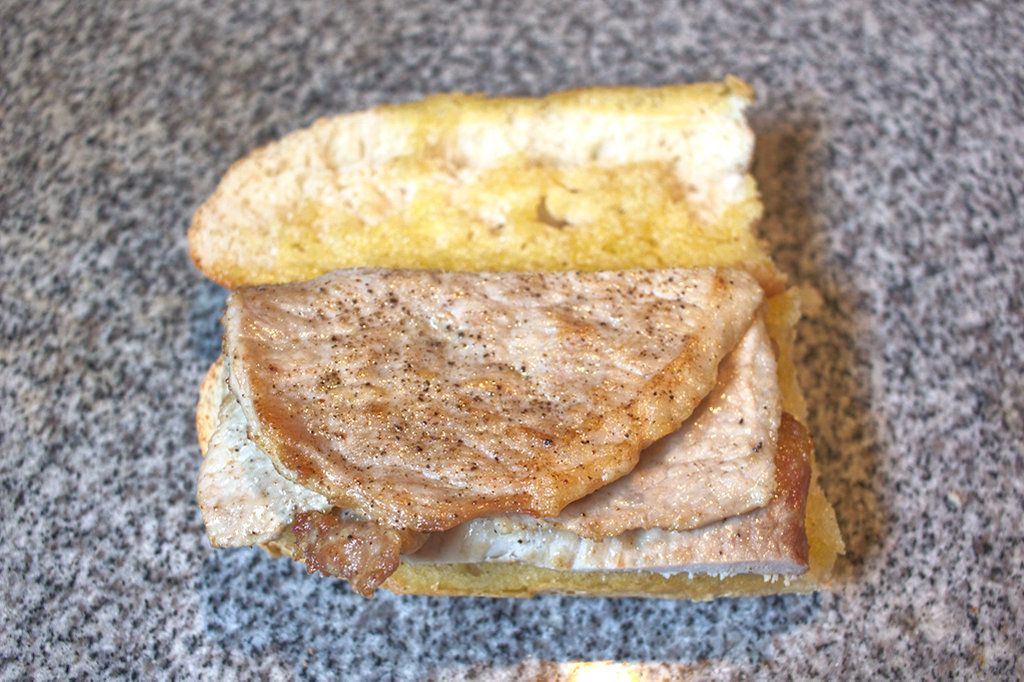
Mindy was uninterested in the blue cheese sauce, so I made her sandwich with allioli and lettuce instead.
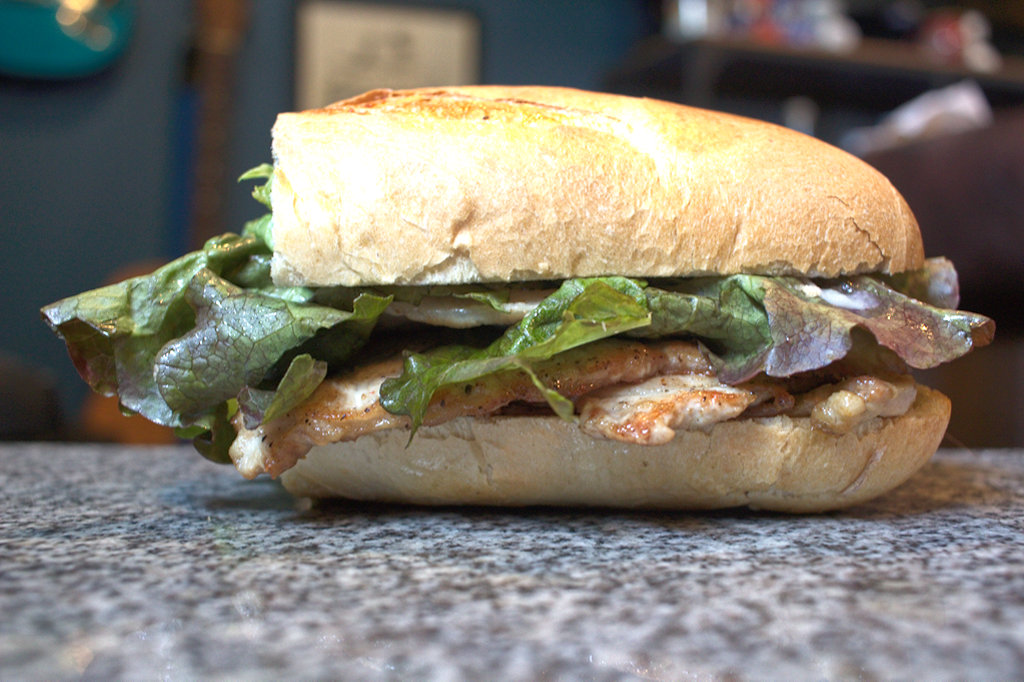
For myself, though, I ladled a healthy helping of the blue cheese sauce–and the sauce, itself, retained the blue color of the cheese’s mold–onto my pork loin.
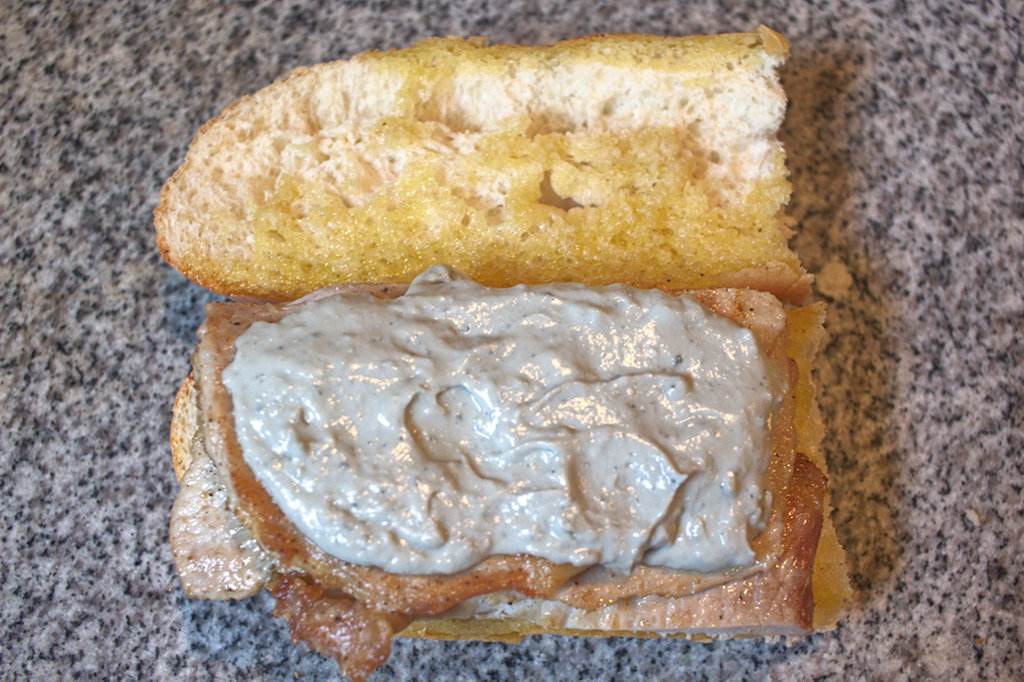
So how does pork loin fare against such an overpoweringly pungent ingredient?
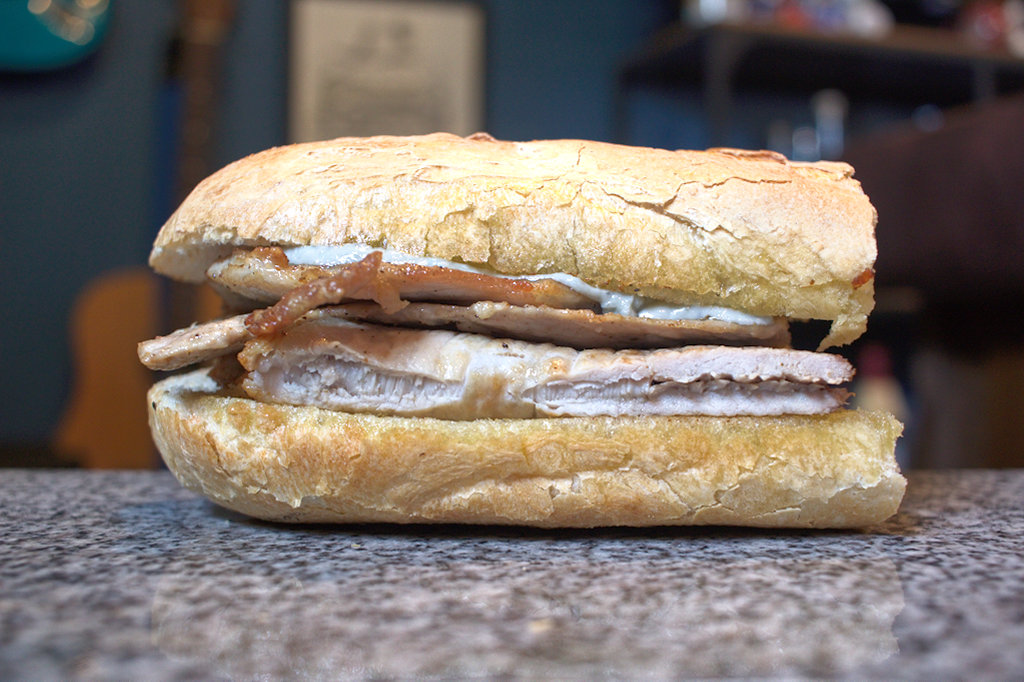
It’s quite a good combination, actually. With 2 thin slices of pork loin, each doubled over to fit within the baguette, there is far more mass of pork than cheese, and the cream sauce managed to tone down the potent flavor of the cabrales enough for even the very mild lean pork loin to be the primary flavor of the sandwich, accented by the olive oil it was cooked in and the cheese sauce it is garnished with.
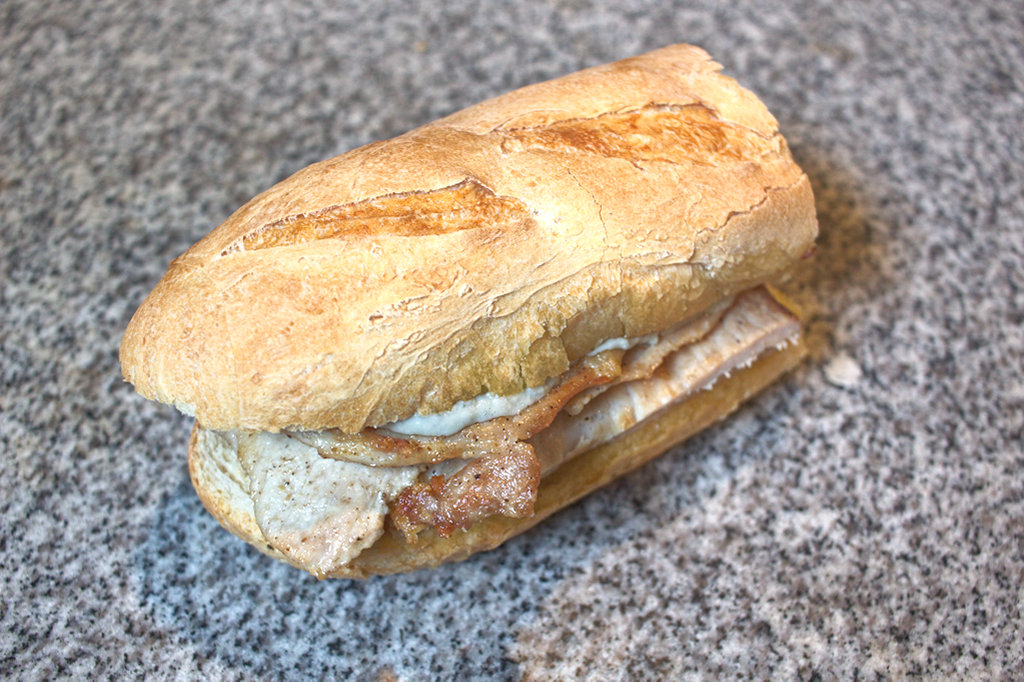
I’ll probably eat several more of these in the next week or two. I honestly can’t think of anything else to do with the cheese.
Again, I know that between this, last month’s post, and our earlier post on montaditos, I’ve barely scratched the surface of bocadillos, much less Spanish sandwiches in general. Please feel free to educate me in the comments. Thanks!

I like sandwiches.
I like a lot of other things too but sandwiches are pretty great



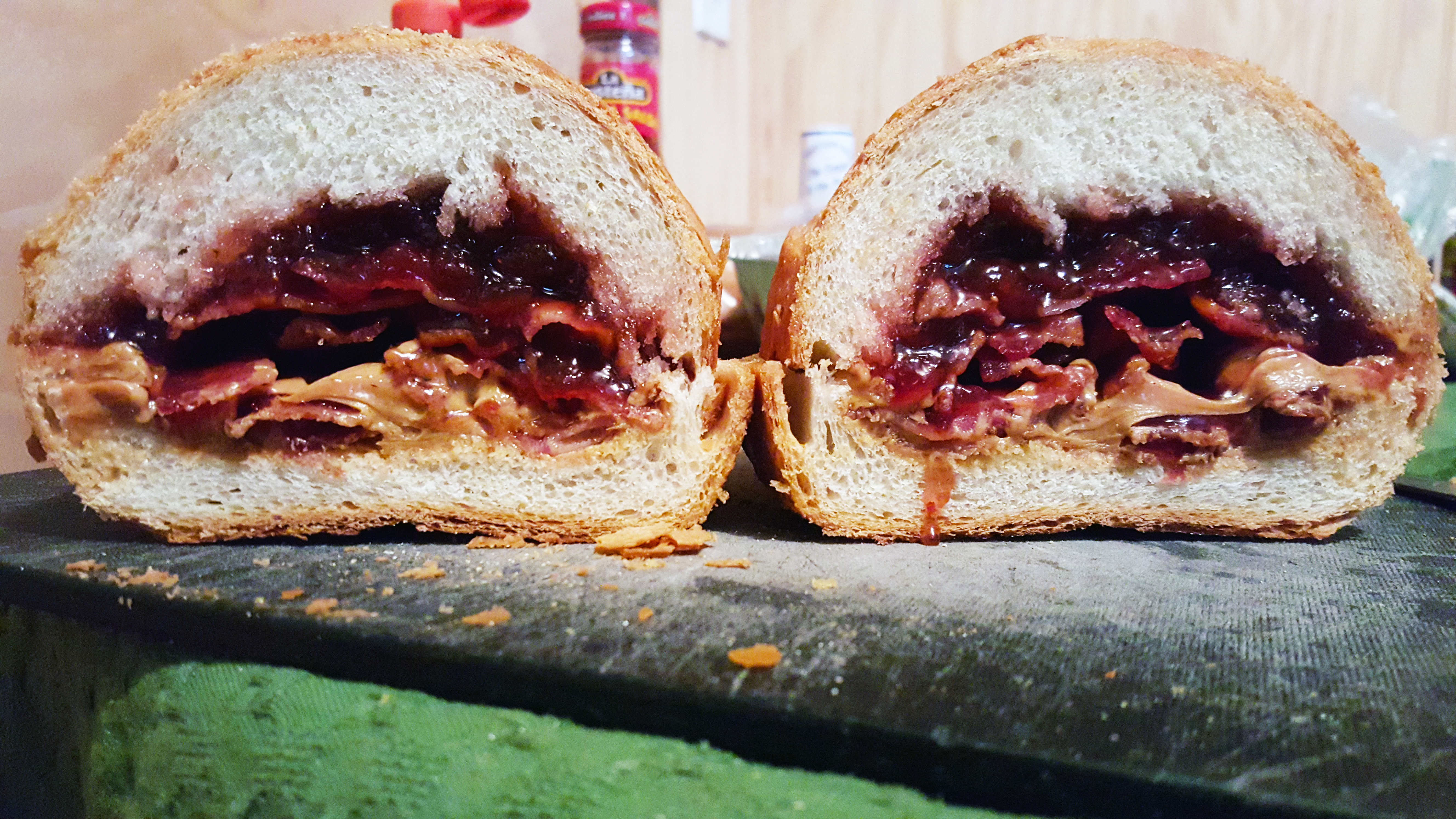







I am so hungry now! I love the detail you put into your descriptions. Maybe I should have had dinner before reading. 🙂
I’ve just found your page and I’m absolutely stunned by the work your are doing here. I had no words when I saw you made a montadito de pringa. If you have a chance, please try the “Serranito”: pork loin, serrano ham, fried green peppers, tomato slices.
Thank you Boris! The Serranito was perhaps my favorite of the bocadillos I tried in my previous post here https://www.sandwichtribunal.com/2020/05/bocadillos-of-spain/